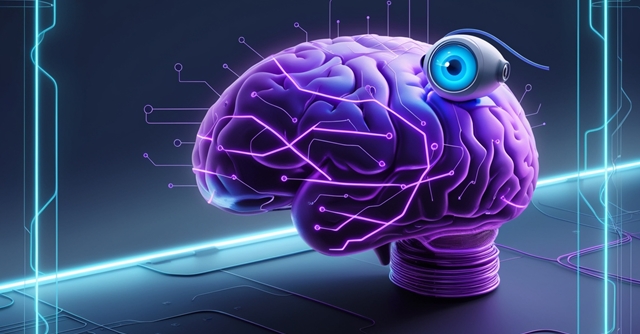
The Rise and fall of Prompt Engineering: A short-lived revolution


The rise of generative artificial intelligence (AI), particularly with models like ChatGPT, marked a significant shift in how humans interact with machines. These AI systems were designed to engage in conversations that felt natural and intuitive, eliminating the need for users to have any specialised technical knowledge. The promise was simple: anyone could communicate with AI as they would with another person.
This development was seen as a major step forward from previous AI models, which required users to understand complex coding or specific commands. With these new AI systems, the burden of clear communication shifted from the user to the AI itself. The AI could ask questions to clarify user intent and generate responses accordingly.
However, as generative AI gained popularity, a new role emerged in the tech landscape: the AI Prompt Engineer. This role involved crafting precise input prompts to guide the AI toward desired outcomes. For a while, prompt engineering was all the rage, filling job boards and creating a buzz in the industry.

The Emergence of Prompt Engineering
Prompt engineering originated from the broader field of natural language processing (NLP), which explores how computers interact with human languages. Early NLP models, such as rule-based systems, required explicit instructions to generate specific outputs. The concept of designing inputs to guide these systems was already present in human-computer interaction studies.
The release of GPT-2 in 2019 and GPT-3 in 2020 by OpenAI marked a pivotal moment. These models, with billions of parameters, could perform various tasks based on the input prompt without needing task-specific training. It soon became evident that the way input prompts were phrased significantly influenced the model’s output. Researchers and practitioners began experimenting with different prompt formats to optimise results, leading to the formalisation of "prompt engineering" as a discipline.

Prompt engineering quickly became essential in fields like content creation, coding assistance, language translation, and even medical diagnostics. The ability to craft effective prompts allowed for better control over model outputs, making AI more accessible and useful across industries.
Sushant Ajmani, Vice President (GenAI), C5i, AI & Analytics provider, said, “The true art of prompt engineering is not just about crafting instructions for a machine. It's about understanding the nuances of human communication and translating them into a language the AI can comprehend, without bias or ambiguity.”
“Due to data sensitivity, lack of standardisation, high risk of bias amplification, and poor interpretability, prompt engineering is showing a diminishing trend, with future focus shifting toward more automated and transparent methods.”

The Evolution of the Field
As prompt engineering gained traction, academic research began to focus on understanding the principles behind effective prompts. Studies explored how different prompts could be used to fine-tune models, improve performance, and reduce biases. This led to the development of tools and frameworks specifically designed for prompt engineering, such as OpenAI’s Playground, where users could experiment with prompts in real-time.
By 2022, prompt engineering had become a recognised skill, with educational resources, courses, and community-driven initiatives emerging to teach best practices. The job of a prompt engineer, which involves optimising textual input to communicate effectively with large language models, was hailed as one of the "jobs of the future" by the World Economic Forum. OpenAI CEO Sam Altman also described it as an "amazingly high-leverage skill."

Despite the initial hype, the prominence of prompt engineering may be short-lived. This shift is due to the rapid advancements in AI models and their ability to learn from user interactions.
The Decline of Prompt Engineering
With each interaction, these AI models not only generate a response but also learn from the input. This continuous feedback loop, powered by millions of users, has made the models more intuitive and responsive over time. The sheer volume and diversity of user interactions have enabled the models to recognise patterns, refine their outputs, and understand context in ways that were previously unimaginable. As a result, the need for meticulously crafted prompts has diminished.
Recent developments, such as the introduction of new features by AI startup Anthropic, have further accelerated this trend. Anthropic's Console now includes tools that streamline prompt generation and evaluation for AI-powered applications. These updates are designed to enhance development speed and improve prompt quality by automatically generating effective prompts based on user intent.

Devroop Dhar, Co-Founder & Managing Director, Primus Partners, said, “The advent of GenAI opened up opportunities in prompt engineering as organisations looked at optimising their inputs through custom instructions to enhance their AI outputs. However, continuous changes and upgrades in GenAI models with newer version of the models makes it easier for people and organisations to get optimal output from AI models, reducing the scope of Prompt Engineering.”
“While the role and opportunities in prompt engineering may undergone refinement and changes based on changes and upgrade of GenAI models, but it would still remain in force,” he added.
The Future
Looking ahead, the future of AI, and the role of prompt engineering within it, is evolving. AI models will likely become more intuitive and responsive, raising questions about the roles that will be impacted by these continuous improvements.

In this future, users will not just be passive consumers of information but active participants in the AI’s learning process. Our interactions with AI will constantly shape and refine the AI’s knowledge base and response mechanisms. While the field of prompt engineering may be fading, it is not an end but rather an evolution. It marks a transition from a phase where AI was a tool manipulated through carefully crafted inputs to an era where AI is a dynamic, evolving entity that co-learns with its users.
The future of AI is not about the death of prompt engineering, but about the ongoing development of AI systems that can better understand and interact with us, making human-machine communication even more seamless and effective.
